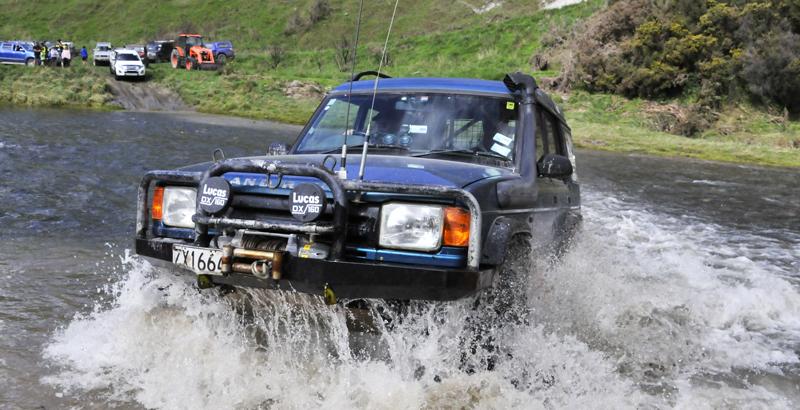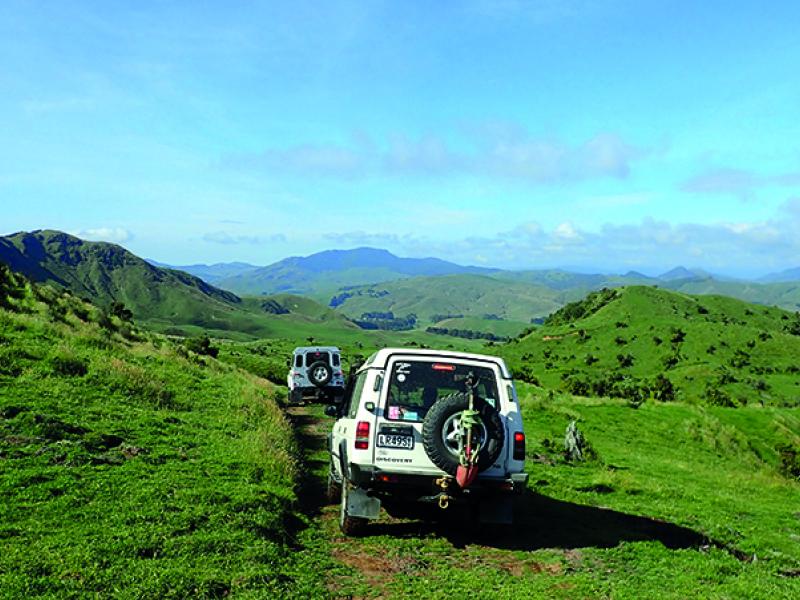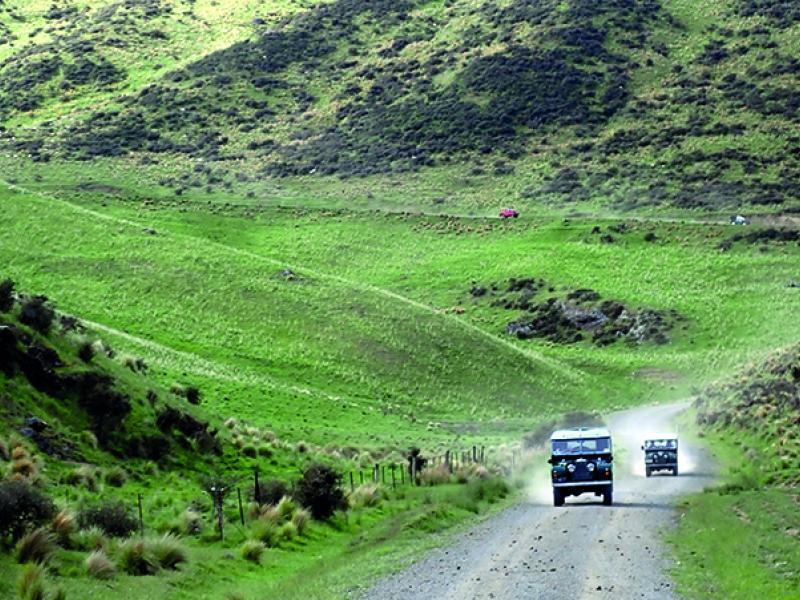Story and photos by Ashley Lucas
The biennial is usually held in hot, dry late summer conditions. Not this year. Normally held (early) every second February, the Hereworth 4WD fundraiser had been postponed to early April after yet another drought and the dry conditions the cause of forest fires in the area.
But from one extreme to another, just a few days before the remnants of Cyclone Debbie had come through the region causing flooding and the slippery conditions. The big benefit was the amount of grass and for trek goers it was a transformation from the hard dry brown barren countryside we were used to. The grass was luscious green, there was plenty of it and the farmers were feeling rather pleased.
Coast ‘n country
The organisers alternate the area for the Trek with one year near the coast and the next event inland. This time it was inland in the Rissington area about 25kms west of Napier and was based at the Omatua Girl Guide complex
Rissington was settled in the 1860s and the first grant of land was made to Colonel Whitmore, head of the British Armed Constabulary. The name Rissington comes from the small village in Cotswold Hills, Lower Gloucestershire, England called Little Rissington, where Colonel Whitmore was from. Actually Whitmore was from Lower Slaughter but due to the Maori wars he adopted the name Rissington.
Crossing the farmland the convoy climbed up the side of what is known as Mt McNeil, one of three prominent hills in the area. At the top we had panoramic views of Hawke’s Bay from Marine Parade Napier to Cape Kidnapper and Te Mata Peak and to the north the Kaweka Ranges.
Easy or hard?
From Mt McNeil we proceeded down and had the option of the ‘easy’ or the ‘hard’ track which was down through the aforementioned pine forest. Most opted for the harder option and even though carefully managed under the guidance of the event controllers some still managed to touch the brakes and either love tap or get very close to a tree.
Once back down at the woolshed we were given further options; head back to camp or a small tour with three stream crossings and a hill climb. Of course we were here to 4WD so most again took the extra section along the river flats. The stream crossings were a little soft where silt had washed down and formed ‘banks’ on the river’s edge. It was only the first few vehicles that had problems as once flattened off it was easy going, however it was the climb up the grassy hill that proved difficult.
The first few vehicles made it, but mostly it was those with very good mud tyres and horsepower that did. Take it too quietly and it was a tricky reverse down.
Back at camp and the “Stagger Inn” was opened for a drink or two prior to the excellently prepared roast beef dinner.
Note to self
Next morning at briefing we learned that one of the planned river crossings might be a bit problematic as the three vehicles that went out to check the tracks hadn’t returned by 10.30pm. They had managed to get two vehicles stuck in the river at the same time and were lucky for the third that eventually recovered them. Note to self, get involved with track recces as they seem to have the best of times!
We drove through several properties with a variety of scenery and at one stream crossing you could see how high the water level had been only a day or two earlier. Lunch was at Te Motu Station in the arboretum-like gardens by the house.
While eating our packed lunches we listened to some of the history of the station and afterwards the commentary was continued via our vehicle radios as we convoyed through the property.
It was then onto the infamous river crossing from last night’s recce. All day they had been planning how to get everyone one through and even arranged for a tractor to be brought down to aide recovery. Also, everyone, no matter who, had to have their recovery rope fitted beforehand.
In the end, though, no one got stuck, and the biggest problem came from those in newer vehicles with the number plates screwed into plastic with only two screws. The water would get behind the plate and the force would rip the plate off the vehicle. Several times someone had to wade in to recover them.
Hill start
After a scenic bush drive we came back out onto Rissington Station and across more farmland. There were a couple of hills in the paddocks and some found them very slippery and difficult to get up. As I came to one I noticed a Defender 110 successfully reversing up the hill.
I thought the driver was showing off to the Toyota wheelman who had just failed, but he told me later he couldn’t get up after several attempts so reversed. Up the top, the paddock was ‘soft’ and the paddock began to look more like it had been ploughed as vehicles went wider and wider to avoid the soft spots. There were even a few who got stuck and needed towing.
There was still time left so it was off to that hill climb from the previous day. Again a few got up but a new Discovery 4 on road tyres had failed and was on the edge unable to go forward or reverse. After a while of indecision as to how to get a winch up to it, Bruce Worsnop just drove his farm Land Rover V8 auto up the steep hill beside it (open diffs), hooked a rope on and quietly towed it to the top.
After another awesome dinner an auction was held for some of the sponsor’s prizes including trips to Cape Kidnapper, accommodation packages, the recovered number plates and even a dinner for six cooked by organiser James Nilsson. Total raised for the school was over $24,000.
Day 3
Sunday was a slightly later start and we headed east straight out the back of the camp through farm property, looped around to another property and made our way through gullies and farm land before dropping down to the Mangoane Stream. Here we had lunch on the banks of the stream while a few ‘played’ in the stream trying to travel up stream.
After lunch one by one each of the vehicles crossed the stream and through Waipounamu Station circling a couple of their onion crops before another short tour on another part of Rissington Station before arriving back at camp to say our thanks and good-byes.
The weather was great all weekend and while some changing of the plans was required due to the cyclone and flooding just two days earlier, it wasn’t noticeable. It will be two years to the next one.
To read every story in the July 2017 issue of NZ4WD go to Zinio.com (June 16) or purchase your own hard copy at the Adrenalin store.







